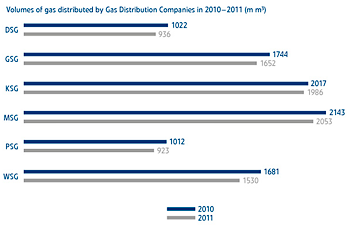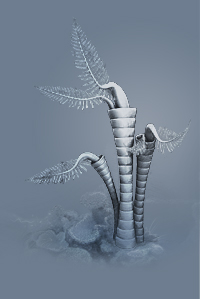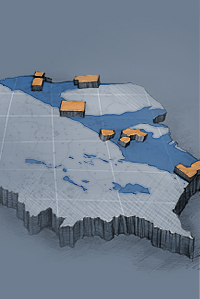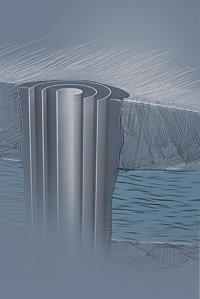Distribution
Through six regional gas distribution companies, natural gas is supplied to households as well as to small and medium-sized companies. In 2011, 9.1 bn m³ of natural gas was distributed through the gas distribution network. Thanks to the professional skills and expertise of nearly 14 thousand staff, every day our customers can feel in their homes the warmth and comfort offered by natural gas.
Key Events
- July 15th 2011 saw the coming into force of new tariffs for the distribution services rendered by the Gas Distribution Companies; on average, the tariff increase was 1.7%.;
- In 2011, the distribution network was extended by over 1,000 kilometres.
The Distribution segment’s core activity consists in the transmission of high-methane and nitrogen-rich gas, as well as small amounts of propane/butane and coke-oven gas, via the distribution network. Distribution of natural gas is handled by six Gas Distribution Companies, which supply gas to households, industrial customers and wholesalers. They are also responsible for operation, maintenance and extension of the distribution pipelines, and for connecting new customers.
Financial Performance in 2011
The Distribution segment derives revenue from transmission of natural gas via the distribution network. The distribution companies’ tariffs are set by the URE. Revenue of the six Gas Distribution Companies is subject to seasonal fluctuations throughout the year. The largest gas volumes are transmitted via the distribution network in the winter season (the first and fourth quarter of each year).
In 2011, the Distribution segment’s operating profit was PLN 784 m, down by PLN 707 m year on year, primarily on the back of significantly lower reversals of impairment losses on assets of the Gas Distribution Companies. Excluding the impairment losses, the operating profit fell PLN 48 m. Despite the higher rates and charges for network services, effective as of July 15th 2011, the segment’s revenue was down, mainly due to higher average air temperatures in 2011, which led to a 539 m m³ decline in the volume of transmitted gas.
Tariff Policy
Since mid-2007 the regional gas distribution companies forming part of the PGNiG Group have had the status of Distribution System Operators.
Gas distribution activities require license, similarly to trading in gas fuel. This means that the gas companies must seek URE’s approval of the charge rates for gas fuel distribution. The tariffs set forth:
- charge rates and subscription fees for the distribution services;
- formula for determining fees for connecting customers to the high-, medium- and low-pressure networks.
The tariff also defines the manner of determining the charges for exceeding contracted capacities, penalties for illegal abstraction of gas and failure to comply with the imposed limitations, and price reductions for failure to maintain quality standards in customer service.
Gas Fuel Distribution
In 2011, the Gas Distribution Companies transmitted through the distribution system 9.1 bn m³ of natural gas (measured as high-methane gas equivalent). This represents a 0.5 bn m³ (5.9%) decline in 2010, when they transported 9.6 bn m³ of gas. As at the end of 2011, the net length of the distribution network (excluding connections) was 119 thousand kilometres. The six Gas Distribution Companies provide services to approximately 6.6 m customers.
| DSG | GSG | KSG | MSG | PSG | WSG | Total | |
|---|---|---|---|---|---|---|---|
| No. of customers (m) | 0.75 | 1.3 | 1.4 | 1.5 | 0.75 | 0.92 | 6.62 |
| Volume of distributed gas (m m³) | 936 | 1652 | 1986 | 2053 | 923 | 1530 | 9080 |
| Network’s length, excluding connections (‘000 km) | 7.81 | 20.96 | 45.0 | 19.21 | 9.9 | 15.92 | 118.8 |
Investment Projects
In 2011, capital expenditure incurred in the Distribution Segment was PLN 1.17 bn. As part of their investment activities, the Gas Distribution Companies focus mainly on connecting new customers to their grids and on upgrading and expanding the gas network. The segment’s network-related expenditure accounted for approximately 84% of the total capital expenditure.
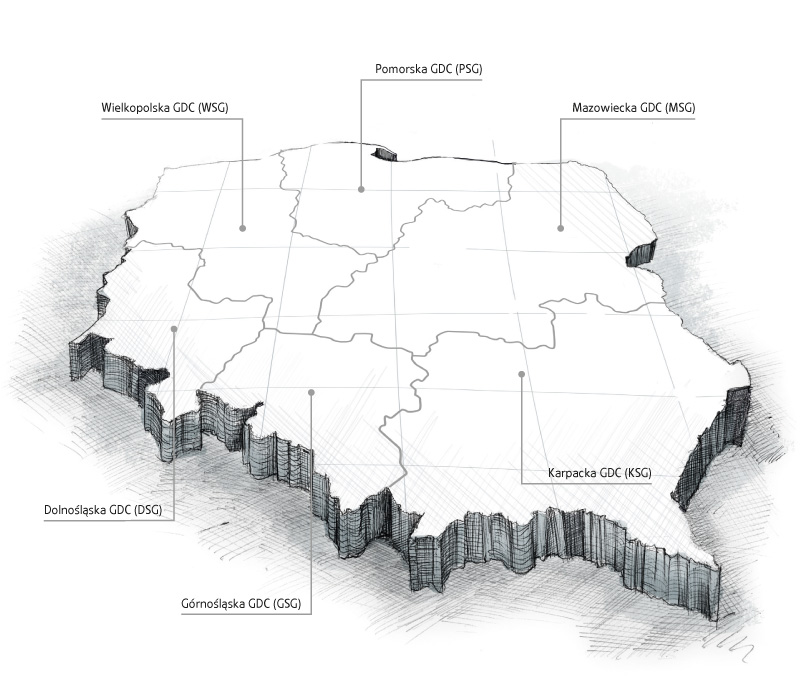 Click to enlarge
Click to enlarge
